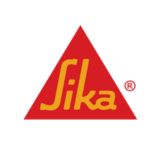20/06/2022
Because it is one of the often overlooked or misunderstood detrimental conditions that can definitely affect the performance of an installation.
Why should you look more closely at the dew point?
Because it is one of the often overlooked or misunderstood detrimental conditions that can definitely affect the performance of an installation.
The dew point is the moisture you often observed on the grass in the morning. On the windows of your vehicle. It takes its source in atmospheric humidity.
OK, but how does it actually happen on a jobsite?
A common cause of surface humidity often occurs when air temperature and relative humidity increase, and when the dew point temperature also increases. The air humidity condenses when the dew point temperature is equal to or higher than the surface temperature; at this point, the water contained in the air condenses on any surface, wherever it is not easily absorbed.
Yes, I too have read it a few times before saying to myself in the end... What is it?
Let's do this step by step. As we all know, water is found in three states: solid, liquid, and gaseous. Let's think of ice, tap water, and water vapour. You know that water is colourless and odourless, but in its gaseous state it is invisible. Some of you may immediately think of water boiling in a pan. But no! It is not water vapour, but a cloud of water droplets suspended in the air. So, it is water in liquid form. Same thing if you think of clouds or fog (hint... they are visible!). Water vapour is invisible. Water vapour is also generally present all around us.
What is the dew point?
The dew point is the temperature at which the water vapour contained in the air condenses and changes from gaseous state to water. This occurs when surfaces are colder than the interior ambient temperature. The dew point is reached when the minimum temperature below which the air can no longer contain the water vapour. It can therefore be thought that the dew point can also be understood as the dew temperature.
Condensation on the surface of the support will delay the drying of water-based materials applied to it (e.g., paste adhesives). It can also affect the performance of latex primers by disrupting the formation of a continuous polymer film (this is called coalescence). In addition, condensation can affect product penetration into the substrate.
How does condensation occur?
Let's use an example. If the ambient humidity is 50 % and the temperature is 20 °C. The water vapour will condense when it comes in contact with a surface at a temperature below 10 °C. Thus, condensation will develop on a cold concrete slab (say 10 °C) in a site where the ambient temperature warms up in the morning (say 20 °C). For this reason, manufacturers indicate that some of their products should be applied at a temperature of 3 °C above the dew point. Be careful, because the dew point temperature can change from day to day and even during the same day.
Here is a formula to determine the dew point or dew temperature:
- P = (b × α(T,HR)) / (a - α(T,HR))
- P : Dew point
- T : Temperature
- HR : Ambient Relative Humidity
- a and b are Magnus coefficients
- The values are: a = 17.625 and b = 243.04 °C
- And c (T,HR) = ln (HR/100) – aT/(b+T)
Pierre Hébert, PA LEED AP BD+C _ CTR-CSC / RTC-DCC
Application Field Manager, SIKA Canada
This text was written by Pierre Hébert.
So, here's a chart that makes it simpler.
For example. With an air temperature of +10 °C and a relative humidity of 80 %, the dew point is set when the structure/substrate temperature is as low as +6.7 °C.
How to act on the dew point?
Condensation can be avoided by increasing the substrate temperature to maintain it sufficiently above the dew point temperature.
By reducing the air dew point temperature around the substrate by setting up an air-drying system. Caution, this does not mean turning on fans (because it would simply be like stirring the air without necessarily drying it). Or some people on the job site may suggest taking air from outside and circulating it inside the jobsite. However, moist outside air can enhance the relative humidity (and therefore the dew point). This would be a bad idea, then. The most effective method remains the use of commercial dehumidifiers or desiccator.
Or… to avoid applying coatings when the surfaces are visibly wet or contain moisture spots or when the temperature is (or might be) below the dew temperature.
